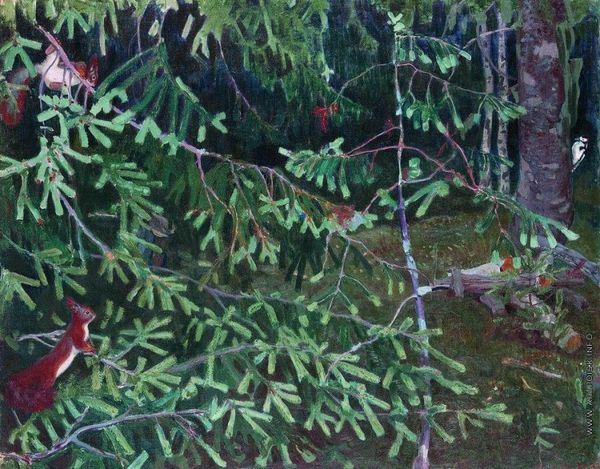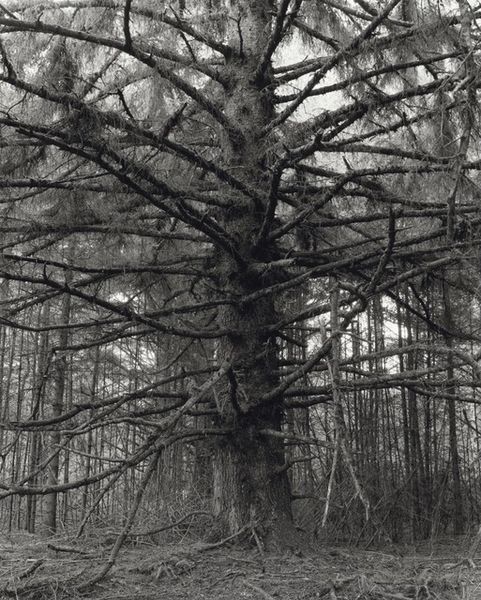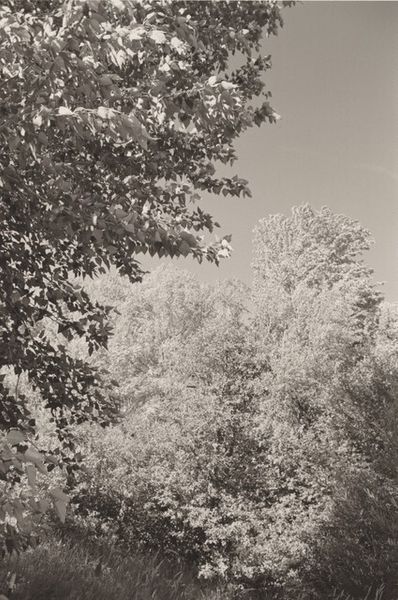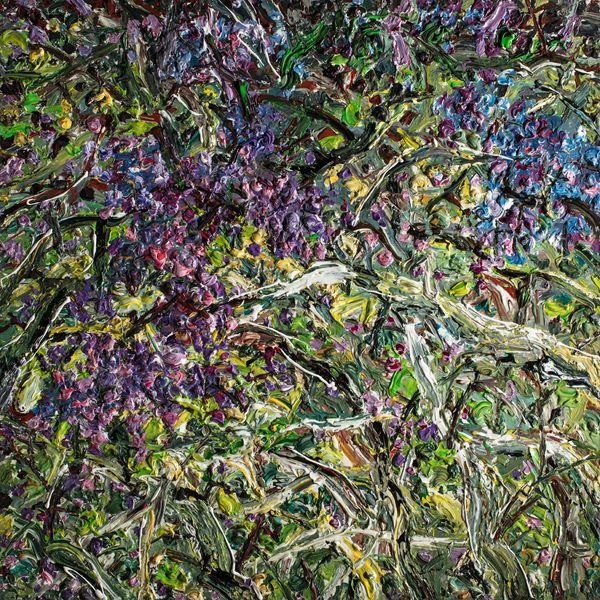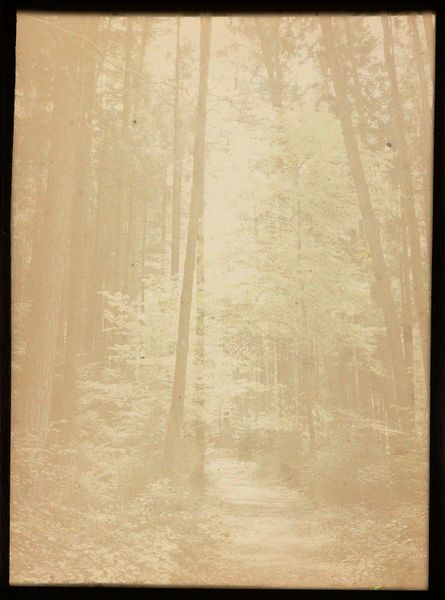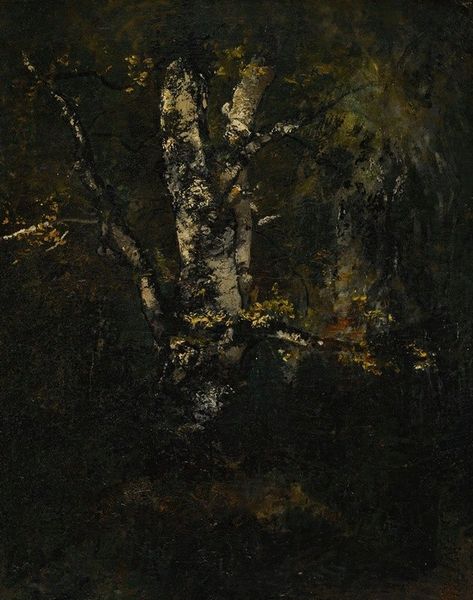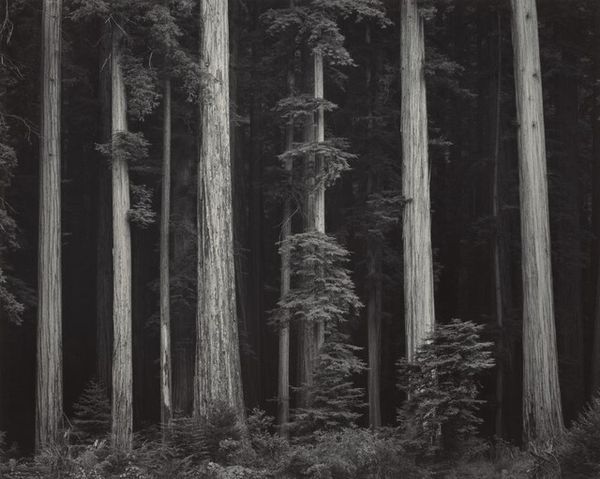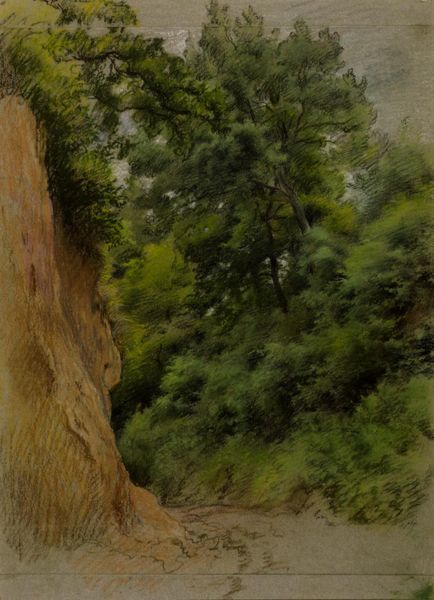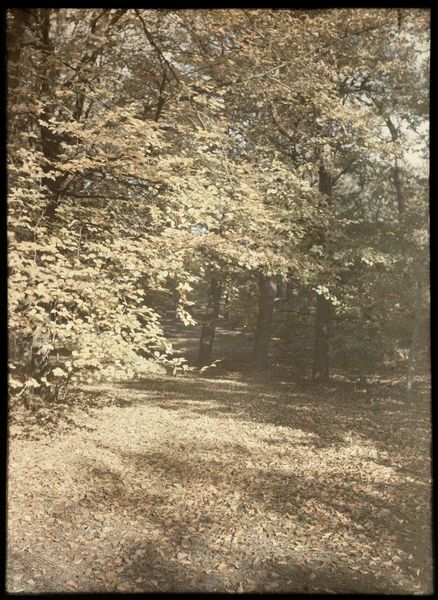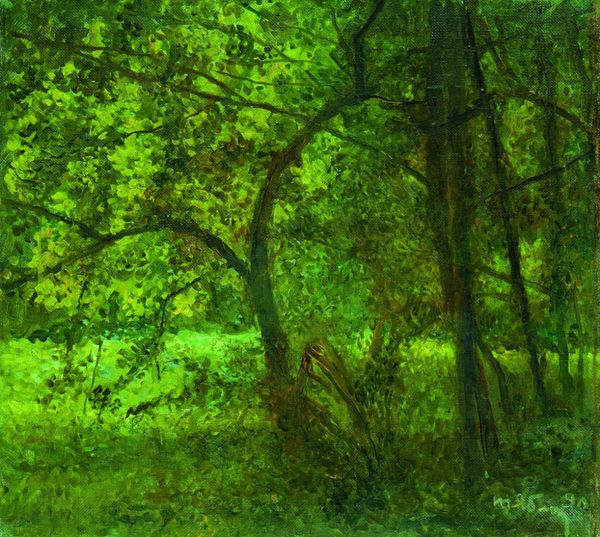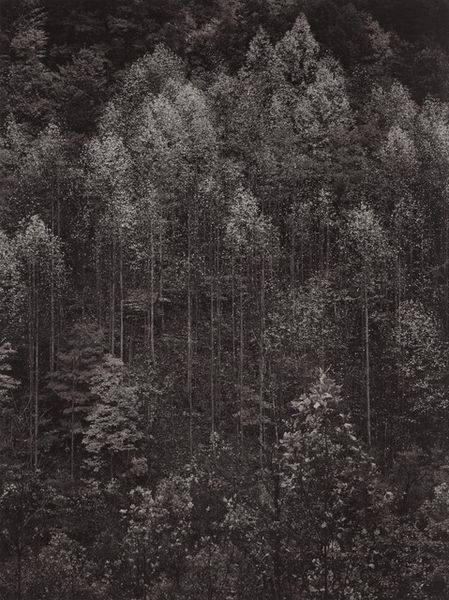
painting, oil-paint
#
painting
#
oil-paint
#
landscape
#
forest
#
northern-renaissance
#
realism
Dimensions: support height 89.8 cm, support width 30.8 cm, sight size height 88.5 cm, sight size width 29.2 cm, frame height 98 cm, frame width 39 cm
Copyright: Rijks Museum: Open Domain
Editor: This is Gerard David's "View in a Forest," from around 1505 to 1515, made with oil paint. It's a surprisingly immersive landscape; you feel like you could step right into the cool shade of those trees. What stands out to you in this piece? Curator: The forest itself operates as a potent symbol. Do you feel a sense of stillness or unease within this meticulously rendered wood? It's interesting to consider how forests appear throughout cultural memory – often representing a space of both refuge and danger, the place where transformative events take place and identities are forged. Editor: I definitely see both! It’s calming, but also a bit…claustrophobic almost? Are you saying David’s tapping into something bigger than just a nice view? Curator: Absolutely. Remember, this panel was the outer wing of a triptych, originally paired with depictions of saints. This forest isn't just decorative; it serves as a symbolic backdrop, possibly even a visual representation of the spiritual journey. Editor: So, like a physical manifestation of inner life? The trials and quiet moments? Curator: Precisely. Forests in Northern Renaissance art can symbolize moral landscapes. Consider the weight of decisions made within such a space, the contrast between light and shadow, the visible and the hidden. Each element carries a psychological charge. Editor: That changes everything. I was just thinking about the artist’s technique and perspective. Curator: Technique is never divorced from content! This is where the real emotional power resides—in connecting the personal with universal cultural narratives. The forest, with all its symbolic resonance, reminds us that even solitary experiences are intertwined with broader human stories. Editor: I’ll never look at a landscape the same way again. Thanks for opening my eyes to this hidden depth. Curator: It’s a reciprocal gift. Looking closely at the material world around us, nature can teach us new things about the history and patterns of human thinking.
Comments
No comments
Be the first to comment and join the conversation on the ultimate creative platform.

